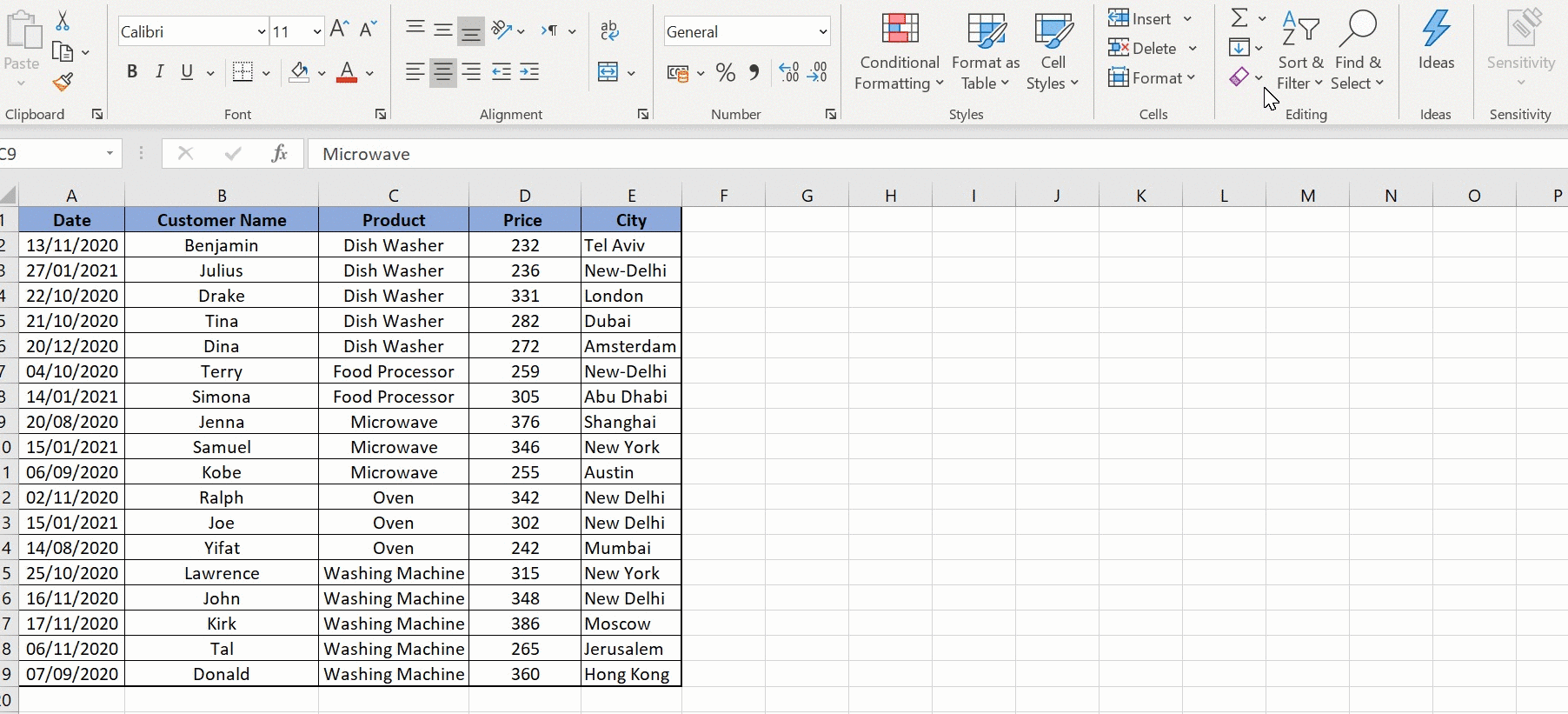5 Quick Tips to Sort Excel Sheets Numerically

Sorting data in Excel sheets is a fundamental skill for data analysis, management, and reporting. Whether you're handling large datasets or organizing personal records, understanding how to sort your data numerically can significantly boost your efficiency. Here are five quick tips to help you master sorting in Excel numerically.
1. Use the Sort Function for Basic Sorting

Excel’s built-in sorting features are straightforward yet powerful:
- Select the range you want to sort.
- Navigate to the Data tab on the Ribbon.
- Click on Sort & Filter group, then select Sort A to Z or Sort Z to A for ascending or descending order respectively.
This method works best when you need to sort one column numerically.
2. Sort with Multiple Levels

If your data requires sorting by multiple criteria:
- Go to Data tab, click Sort from the Sort & Filter group.
- In the Sort dialog, you can add levels by clicking Add Level.
- Specify the column to sort by, choose Sort On, and decide the Order.
This multi-level sorting helps when you have data with several numerical attributes, like sorting sales data by region and then by sales figures.
3. Advanced Sorting with Custom Lists

Sometimes, standard sorting doesn’t suffice; for instance, when you need to sort by a custom numerical order:
- From the Sort dialog, you can create a Custom List.
- Enter your custom numerical list (like priorities or ratings).
- When sorting, choose to sort by your custom list instead of numbers directly.
🗒️ Note: Custom lists can be quite useful for sorting data in Excel based on non-standard numerical sequences or specific orders.
4. Data Preparation for Sorting

Ensure your data is clean and formatted correctly before sorting:
- Remove any extraneous characters from numbers, such as commas or currency symbols, which might prevent Excel from recognizing them as numbers.
- Set all numbers to the same format (e.g., all as decimals or all as integers).
- Use the Text to Columns feature to split and properly format mixed data columns if necessary.
5. Use Excel Formulas for Dynamic Sorting

For dynamic sorting where the data changes or needs to be displayed differently:
- You can use functions like
SORTorSORTBYfor Excel 365 or Excel 2021. - Here’s how:
=SORT(A2:B10)will sort the entire range A2:B10 by the first column in ascending order.=SORTBY(A2:A10,B2:B10,1)sorts range A2:A10 based on values in B2:B10 in descending order.
Dynamic sorting through formulas provides an adaptable solution for real-time data management.
Key Takeaways

Incorporating these sorting techniques into your Excel workflow can greatly enhance your data management capabilities:
- Standard Sorting: Use built-in features for quick numerical sorting.
- Multi-Level Sorting: Sort complex data with multiple criteria.
- Custom Lists: Create custom numerical sorting sequences.
- Data Preparation: Ensure your data is ready for sorting.
- Dynamic Sorting: Employ Excel formulas for real-time sorting flexibility.
💡 Note: Keep in mind that Excel can handle large datasets when sorting, but for very extensive lists, be mindful of system performance and consider optimizing data beforehand.
🔍 Note: For more advanced data analysis, combining sorting with Excel's filtering capabilities can provide a richer insight into your data.
By mastering these five tips, you'll be equipped to handle various sorting scenarios in Excel with greater efficiency and accuracy, enabling you to manage your data with ease and extract valuable insights more quickly. Sorting is not just about organizing data; it's about making data speak to you, revealing patterns, trends, and opportunities for optimization.
Can I sort by more than one column in Excel?

+
Yes, Excel allows you to sort by multiple columns. Use the Sort dialog to add multiple sorting levels where each level represents a different column.
Why is my data not sorting correctly?

+
This can happen if your data is not formatted as numbers or if there are inconsistencies in how data is entered (e.g., spaces, special characters). Make sure to prepare your data before sorting.
How can I make my sort dynamic?

+
Use Excel formulas like SORT or SORTBY for dynamic sorting, which updates automatically when the data changes.
Is there a limit to how many rows Excel can sort?

+
Excel can theoretically sort up to its row limit, which depends on the version. However, very large datasets might impact performance, and Excel 365 or Excel 2021 can handle dynamic sorting better with newer features.
Can I sort data without affecting the original dataset?

+
Yes, you can use functions like SORT or SORTBY which will create a new, sorted view of your data, leaving the original data untouched.



